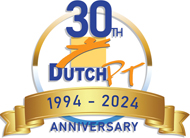Types of Back Injuries You May Be Referred to a Physical Therapist For:
- “Disc Bulges“, “Ruptured Disc” and “Slipped Disc” are some of the terminology used for problems with the disc in the spine. The disc is the jelly-like substance that acts as a shock-absorbed between the vertebra. If the disc is damaged it can push out and put pressure on the nerve or the spinal cord itself and can be very painful.
- “Pinched Nerve” means that something is putting pressure on the nerve causing pain and irritation. Usually the pressure is caused by the disc, but it can also be from other things such as spasm in the muscle next to the nerve.
- “Joint Irritation” is an inflammation in the joints in the spine (called facet joints). the joints swell spending prolonged amounts of time in awkward positions or sudden traumatic movements.
- “Arthritis” is a normal aging process of the body. Sometimes it can become painful as the joints get irritated and inflamed.
- “Muscle Spasms” are basically muscles that have tightened up and haven’t let go or relaxed. These spasms can be very painful. Muscles that have not been properly conditioned for the work they are doing are more susceptible to this.
- “Injury and Trauma” occur when the neck moves in jerky or unnatural ways, causing stress on the muscles and joints. Whiplash is the most common neck trauma, and can make movements stiff and painful.
Why Try Physical Therapy First?
Physical therapist are specialists who are highly trained in how your back muscles and spinal joints are supposed to work for you.
The goals of physical therapy are to restore the normal motion, flexibility and strength in the muscles and joints to get them to move as freely as possible. As a result, you not only function better but have reduced pain and discomfort.
What Treatment To Expect?
- Exercises will be used to aid your recovery. The goal is to improve your body’s ability to hold onto the changes the therapy makes, to stabilize and support your spine and make you strong and flexible. Exercises help you get back to a level of daily activity that restores your quality of life at home and at work. your physical therapist will be designing your exercise program to accomplish all the benefits that you need.
- Hands-On Manual Therapy Techniques are very specialized techniques done by physical therapist using their hands in very precise ways to relax muscles in spasms, to lengthen tight muscles, to restore balance to the muscles in the area and improve the motion of the small joints in the spine and pelvis area.
- Posture and/or body mechanics education to help you use safer positioning of your body during daily activities. This can not only aid in your recovery but can help you prevent further injury in the future.
- Modalities (or the use of heat, cold, electricity, dry needling, etc) may be used to help decrease the pain you are experiencing, improve circulation and/or help the muscles relax. This is usually done as a preparation for doing exercises or activities to improve strength and flexibility.




